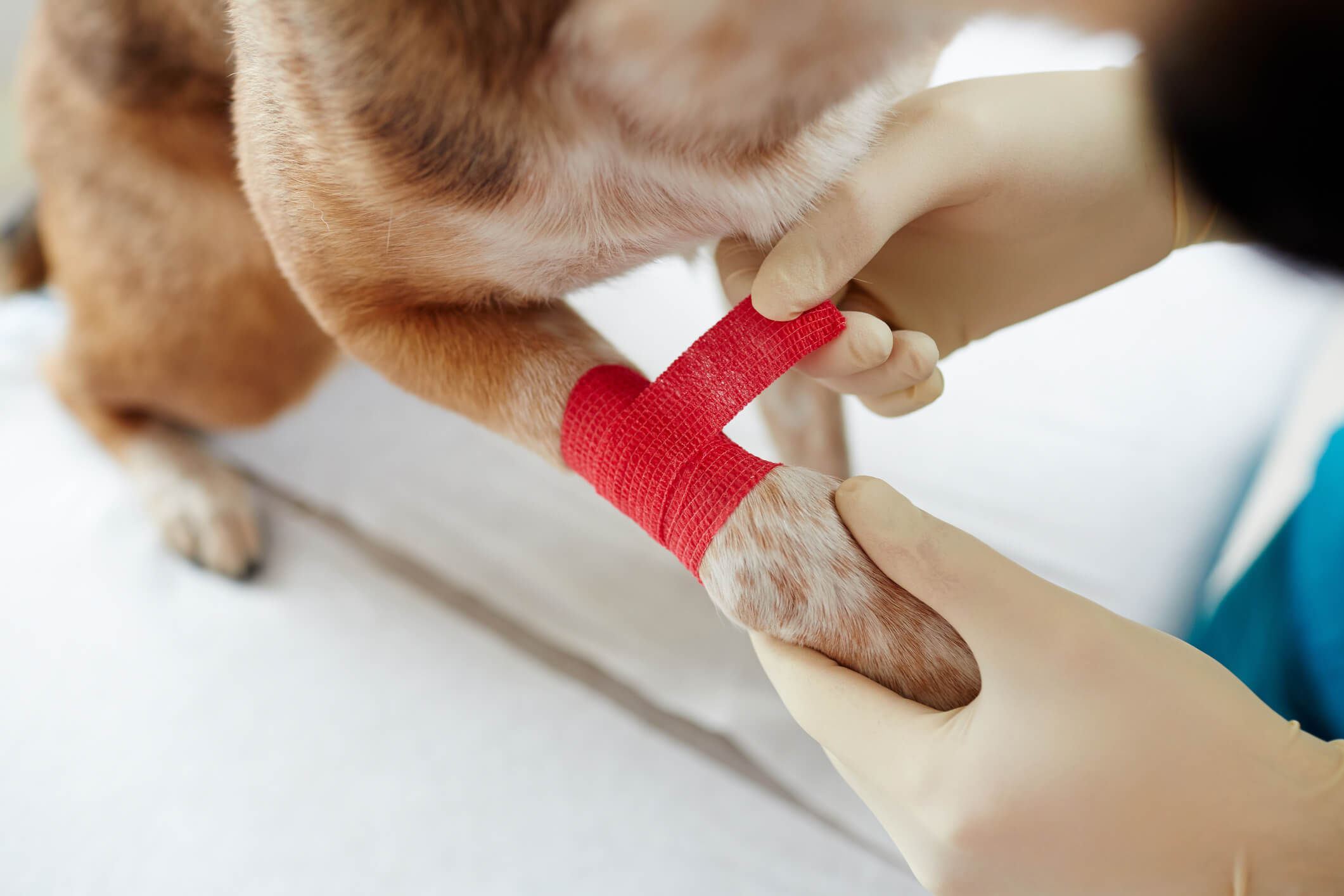
Pet First Aid: Is it Worth the Training?
Many of us are familiar with basic first aid for humans. You’ve probably had to clean up your fair share of cuts, scrapes and nose bleeds. Pets also require first aid from time to time—except the process is entirely different.
Unfortunately, too many pet parents don’t believe they need to learn pet first aid until it’s too late. Owners need to be prepared if and when their fur babies get injured or sick. Here’s why pet first aid is important, examples of common emergency scenarios and some supplies to keep handy.
Why you should learn pet first aid
Every owner needs to learn pet first aid because you never know when accidents will happen. Your pet relies on you for care, especially when they get hurt. Pet parents must be able to administer first aid before visiting an emergency clinic. First aid can minimize blood loss and circulate oxygen to the brain until medical help arrives. What you do on the way to a pet hospital could make the difference between life and death!
First aid isn’t the same for pets and humans, either. Pets require a different approach to tasks like dressing wounds and taking temperatures. Pet parents need to learn how both methods differ because applying first aid the wrong way could make your pet’s condition worse. Pets and humans respond differently, too. An injured pup might get aggressive, so owners must exercise caution to avoid getting hurt themselves.
Another reason to learn first aid is that pets are always getting into trouble. They steal chocolate while you’re not looking, and some will pick a fight at the dog park. Around every corner is a chance for your pet’s health to go awry. Try as you may, you won’t be able to prevent every accident. First aid can help you prepare for these situations.

Common first aid scenarios
First aid prepares you for the most common injuries among pets. This will help you know what to expect and stay calm in the event of an emergency.
Here are some first aid scenarios you may encounter as a pet parent:
- Food poisoning: A lot of human foods are deadly for dogs and cats. Owners must know how to respond in case the pet eats chocolate, grapes or garlic. Pets can also get into toxic chemicals like antifreeze and household cleaners. You may have to induce vomiting before the toxins get absorbed into the bloodstream. You’ll also have to tell a vet or poison hotline how much the pet swallowed and when.
- Scratches and puncture wounds: Pets can get open wounds pretty much anywhere. They could step on yard debris, fight with a stray cat or play a bit too hard. Pet parents must understand how to clean, disinfect and dress various types of wounds. Improper care could lead to bacterial infection or excessive blood loss.
- Choking on foreign objects: Pets eat a lot of things they shouldn’t, including random objects around the house. Your pet may attempt to swallow string, plastic bags or toy pieces. These objects might become lodged in the airway and cut off their oxygen supply. There are very specific ways to perform the Heimlich maneuver on pets and check the mouth for obstructions. You’ll also have to become familiar with the signs of choking.
First aid supplies to carry with you
First aid requires assembling the right supplies. There are several items that can assist you in all sorts of first aid scenarios.
Here’s what every pet parent should have at home and while traveling:
- Gauze and bandages: These supplies are essential for cuts, scrapes and punctures of any size. Make sure you’re using pet-friendly bandages that won’t stick to the fur or cause discomfort.
- Antibacterial ointment: Before applying a bandage, you need to disinfect the wound with antibacterial ointment. Again, make sure the ointment is approved for pets. You can also apply antibacterial spray if the pet won’t let you touch them.
- Emergency phone numbers: Sometimes, all you can do is recruit professional help. Keep important phone numbers in your first aid kit, like the number for the emergency vet clinic and pet poison hotline. A medical professional is waiting on standby to give you instructions on how to handle an injured, choking or unconscious pet.
Some pet parents assume nothing bad will ever befall their fur babies. However, that mentality doesn’t prepare you for emergencies that very well could happen. Millions of pets every year fall victim to injuries and illness, which could be minor or deadly. Taking the time to learn first aid can save a pet’s life.


